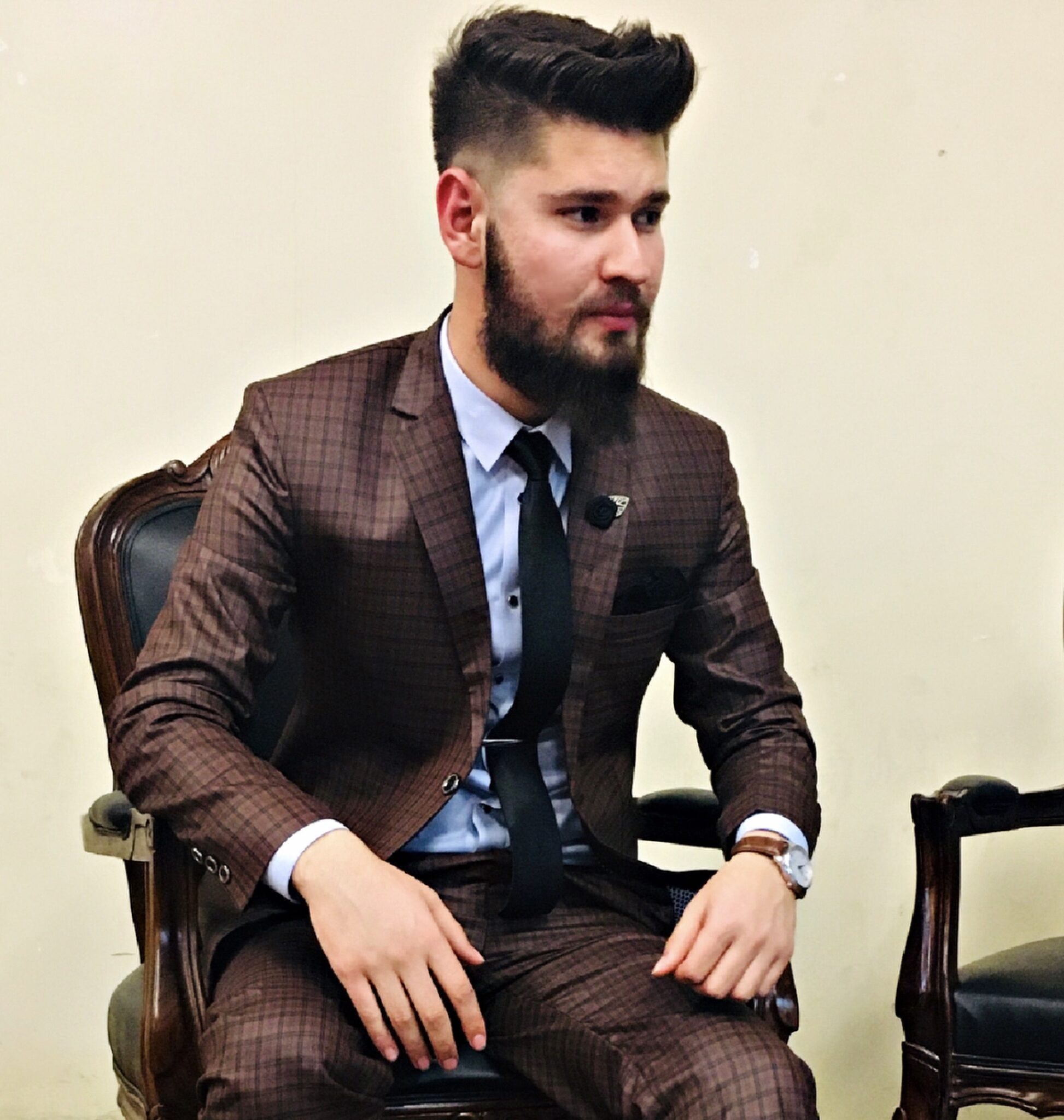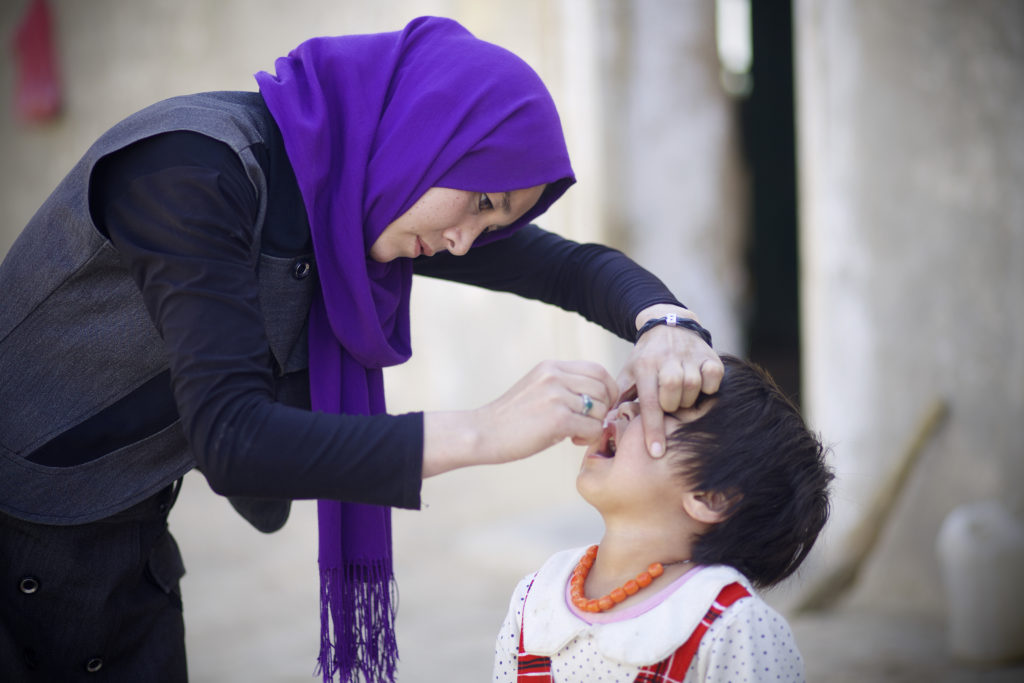Shabana, an eight-year-old girl in Bajaur district, was waiting for her sisters to return from school. Unlike other young kids who used to wait for their siblings in the afternoon, this isn’t normal in any way. Girls have recently started going to schools in this part of the district. They are all full of zeal and committed to change; all are dreaming of a bright future with no handicapped. But Shabana is still stuck in her place.
She remembers when, a few years back, polio workers knocked on her gate, but her father chose not to get her vaccinated. Today she can not walk around without a wheelchair. All she does is to wait for her sisters to return from school. In a few years, her sisters will graduate and will go on with their lives. But Shabana will still be stuck there, at the gate waiting for her loved ones to return.
Doctors say that the Polio is barring Shabana to live a healthy life. Although it could have been prevented if she were given proper vaccines, and after this heart-wrenching situation, her father is now fully convinced that she should’ve been vaccinated. But this realization came at the cost of Shabana’s future.
Polio – the monster that took Shabana’s states of happiness away – is life-threatening’ condition characterized by paralysis of a part of the body, mostly in the legs but can also involve muscles of the neck, head, and diaphragm. Caused by a tiny ‘poliovirus,’ it can infect the spinal cord, cause muscle weakness, and can disable a person for life or even lead to the death of the individual. Polio is also called infantile paralysis based on its propensity to affect children. In those with muscle weakness, 5 percent of the children and 15-30 percent of the adults’ infected die.
Poliomyelitis, as it’s named in Pathology, does not exhibit symptoms in people with healthy immune systems. The only noticeable symptoms are abdominal pain, gastrointestinal disturbances, respiratory tract infections, and influenza-like illness. These are mostly ignored for being very common and trivial.
The poliovirus is an Enterovirus and possesses RNA as its genetic material. Viruses of this kind live in the gastrointestinal tract and particularly in oropharynx and intestines. It takes around 20 days for the virus to exhibit its symptoms, which is called its incubation period. Poliovirus is found in three serotypes, PV1, PV2, and PV3. Overall they produce the same symptoms, but PV1 is the most encountered form and associated with paralysis.
Vaccines and Eradication of Poliovirus
Poliovirus existed from pre-historical age but first reported in 1789 in England. In the 1900s, its outbreaks in Europe, America, and Australia caught the eyes of the world. In the 1950s, it shaped the US’ worst pandemic by killing 3,145 patients and leaving 21,269 paralyzed. Curing Polio had become the priority of all governments in the 20th century. Many scientists tried and came up with solutions to the problems.

The two most commonly used vaccines are Sabin and Salk vaccines.
Salk vaccine is the inactivated polio vaccine that came in use in 1955 and administered via injection (IPV). Sabin vaccine, on the other hand, is a weakened poliovirus vaccine that is administered orally. These vaccines are safe in use, can effectively reduce polio cases an estimated 350,000 by 1986 and 37 by 2016. It is due to these polio vaccines that the world has successfully eradicated Polio and is now only limited to Afghanistan and Pakistan. Nigeria, too had destroyed the virus, and is now declared polio-free.
Why is Pakistan Still Unable to Eradicate Polio?
In the 1990s, Pakistan’s annual polio cases reported were about 20,000. In 2014 there were 306, 54 in 2015, 20 in 2016, and 8 in 2017. The numbers were promising, and Pakistan seemed to have won the war against this tiny monster. But in 2019, the annual cases reported sprung back to 146! This was a blow to all the vaccination efforts done by the government and respective departments. We are only three months into 2020, and 30 cases have already reported, most of which are from the provinces of KPK and Sindh. (Ref: endpolio.com.pk)
Low immunization completion is mostly due to unfavorable socioeconomic factors in addition to conflicts, such as illiteracy, poverty, and difficult access to immunization service and community health. Here we take a look at the factors involved in hindering Pakistan’s efforts to eradicate Polio.
Ineffective vaccination Campaigns
In the 1970s, Pakistan started the Expanded Program of Immunization (EPI) to combat vaccine-preventable diseases. In 1980 it had immunized only 2% of the population. In 1990 it had successfully vaccinated 54% of the community, and Pakistan expected to eradicate Polio in the next few years. But the rate of immunization slowed down, and Pakistan couldn’t eradicate Polio in time. People were not getting appropriately vaccinated. The under vaccination of the population had many reasons. People were mostly uninformed about the disease and prevention. Many also considered it as an unimportant practice. Most of the time, vaccination centers would be far away; thus, people had to travel long distances to get their kids vaccinated. To solve these problems, other international organizations stepped in and urged to develop door-to-door vaccination campaigns and an intensive eradication program.
Faulty Healthcare Infrastructure
Pakistan spends only 2% of its GNP (gross national product) on healthcare that is unable to provide adequate health infrastructure and service delivery in many parts of the countries, especially northern areas that are too remote. Although these efforts enjoy financial support from foreign organizations, their efficiency is compromised by the lack of transparency. Most of Pakistan’s remote areas are already affected by natural disasters or war against terror that pushes immunization efforts to secondary places. Some EPI centers don’t even have computerized records and logbooks of their activities that further complicates the process. Proper check and balance could have kept these centers alive, and eradication of Polio would have been more manageable that way.

Lack of Awareness/Illiteracy
Areas that have still have polio cases surfacing from are mostly those with meager literacy rates. These people don’t usually know about the disease and its severity. They don’t realize how handicapped their children can be, in case they get the disease. Government and Immunization firms first need to work on developing a sense of concern in parents. People can be easily convinced to vaccinate their kids if religious scholars are told to talk about this issue. Most of the time, the common public chooses to follow them, and this can be helpful here too!
Oral vaccine Efficacy
Mostly in remote areas, it’s hard to keep the vaccines at the optimum temperatures required for its storage due to power outages. Some of the time, human errors also harm the vaccine. These harmed vaccines that contain weakened poliovirus can cause Polio if administered to children. Such incidents can raise suspicions about the vaccine’s efficacy among the public.
Misconceptions About Polio Vaccines
Apart from rare polio cases caused by expired polio vaccines or wrong administration of the said, a large part of Pakistan’s population is also skeptical about its side effects. Infertility, body weakness, and even deaths are associated with wrongly with polio vaccines. Effective vaccination campaigns must also include clearing these misconceptions and raising awareness among the public. Parental refusals are mostly due to these misconceptions and others alike. Some even think that these vaccines contain monkey or pigs derived products. The repetitive pattern of administering vaccines is also doubted, and parents often feel that either these repeated visits are being done to ensure that the kids get sterilized, or somehow substandard vaccines were used for the first time.
Security situations
One of the most significant factors involved, especially in former FATA, is the insecurity and continuous conflict in the region. Conflicts pushed vaccination down in the priorities list, and the dispersed population in those areas were not only mostly left unvaccinated but also unaware of the disease and its consequences in the first place. Immunization efforts from 1998 to 2005 resulted in a sharp decrease in poliovirus cases, but these started rising year by year after 2006 with Taliban insurgency.
Negative Propaganda Against Polio Vaccine
The most commonly presented example is that of the CIA funded a fake hepatitis B campaign in Abbottabad. This campaign was used to trace Osama bin Laden. Most of the time, polio vaccination campaigns are associated with such spy activities too, and the vaccinators are thought of as US spies. It is saddening that vaccinators are getting shot in the streets, and the government has to provide them with security. Some people even quote fatwas against polio vaccines from so-called clerics.
These are a few of the reasons that have been hindering Pakistan’s efforts against this tiny monster. Finally, out of conflicts and focusing on rebuilding its economy, Pakistan should also focus on its healthcare and develop a wholesome policy that concentrates on vaccination and especially the eradication of Polio. Because in this age of development, we need to make our coming generations safer!
Also, read; How we achieved the feat of eradicating Smallpox from planet earth

Bashir Ahmad is a medical student and an aspiring reconstructive surgeon. He manages Pakscience, a social media platform dedicated to Pakistan’s science, tech and education stories. He’s been associated with Scientia’s mission since 2019.

